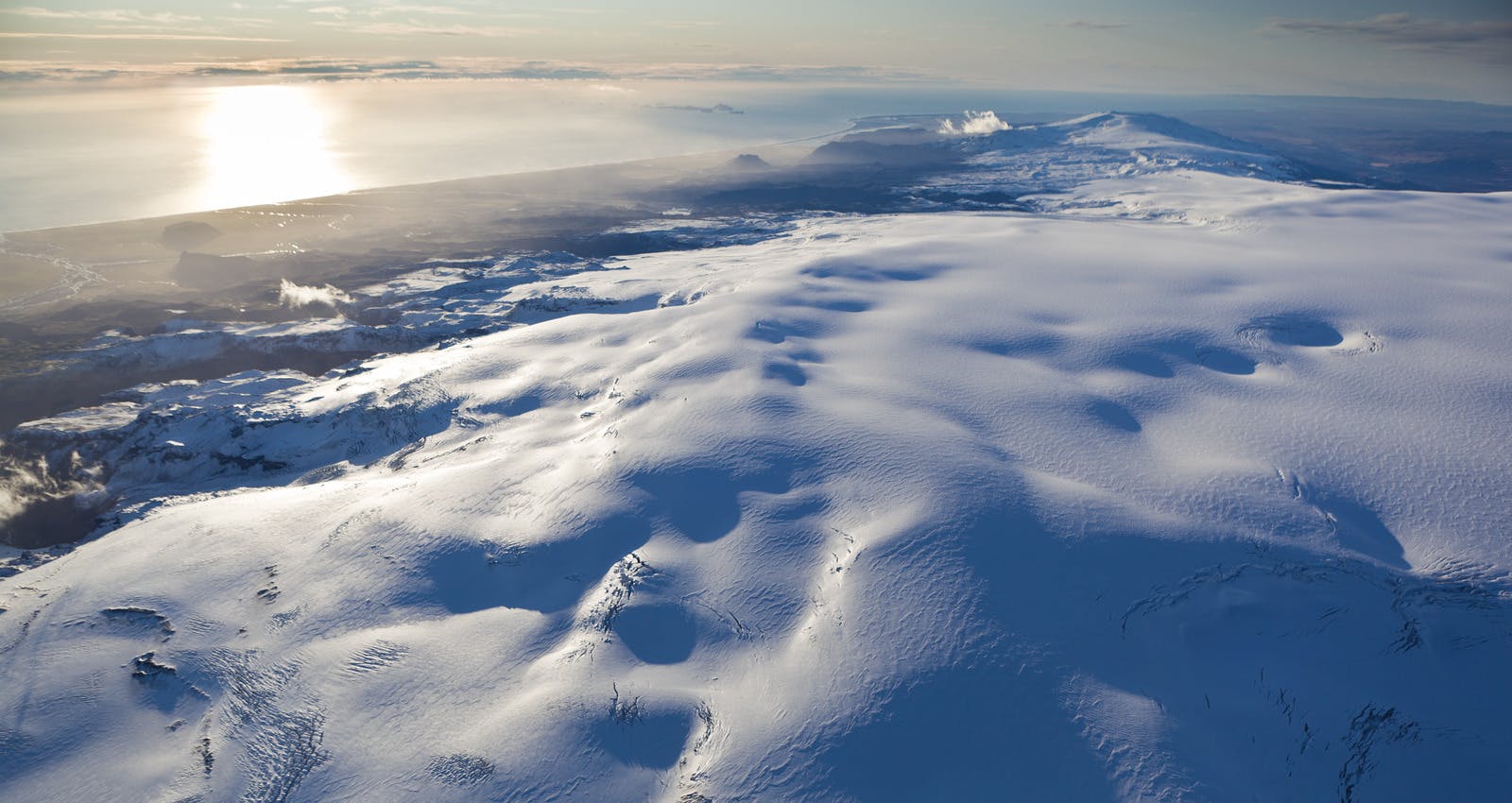
Is Katla preparing to Erupt?
Katla is a massive subglacial volcano located under the mighty Mýrdalsjökull Glacier.
While some minor volcanic eruptions have not broken through the ice recently, it’s been more than 100 years since Katla’s last major eruption. Indeed, Katla last erupted in 1918; since 920 AD, more than 20 eruptions have occurred.
There has been some unrest in recent years in the form of earthquakes. Scientists monitor Iceland’s active volcanoes closely, and an eruption is not to be considered imminent.
What type of volcano is Katla?
Katla is a significant subglacial volcano, ranking among Iceland's largest. It lies beneath Mýrdalsjökull, the country's fourth-biggest glacier. This active volcano is closely monitored by Icelandic geologists, so there's no immediate concern about an eruption.
In the event of seismic activity, prompt alerts, suspension of tours, and road closures will be implemented. Geographically, Katla sits centrally on Iceland's South Coast, nestled between Eyjafjallajökull glacier to the west and the town of Kirkjubæjarklaustur to the east.
Recent Seismic Activity in Katla Caldera
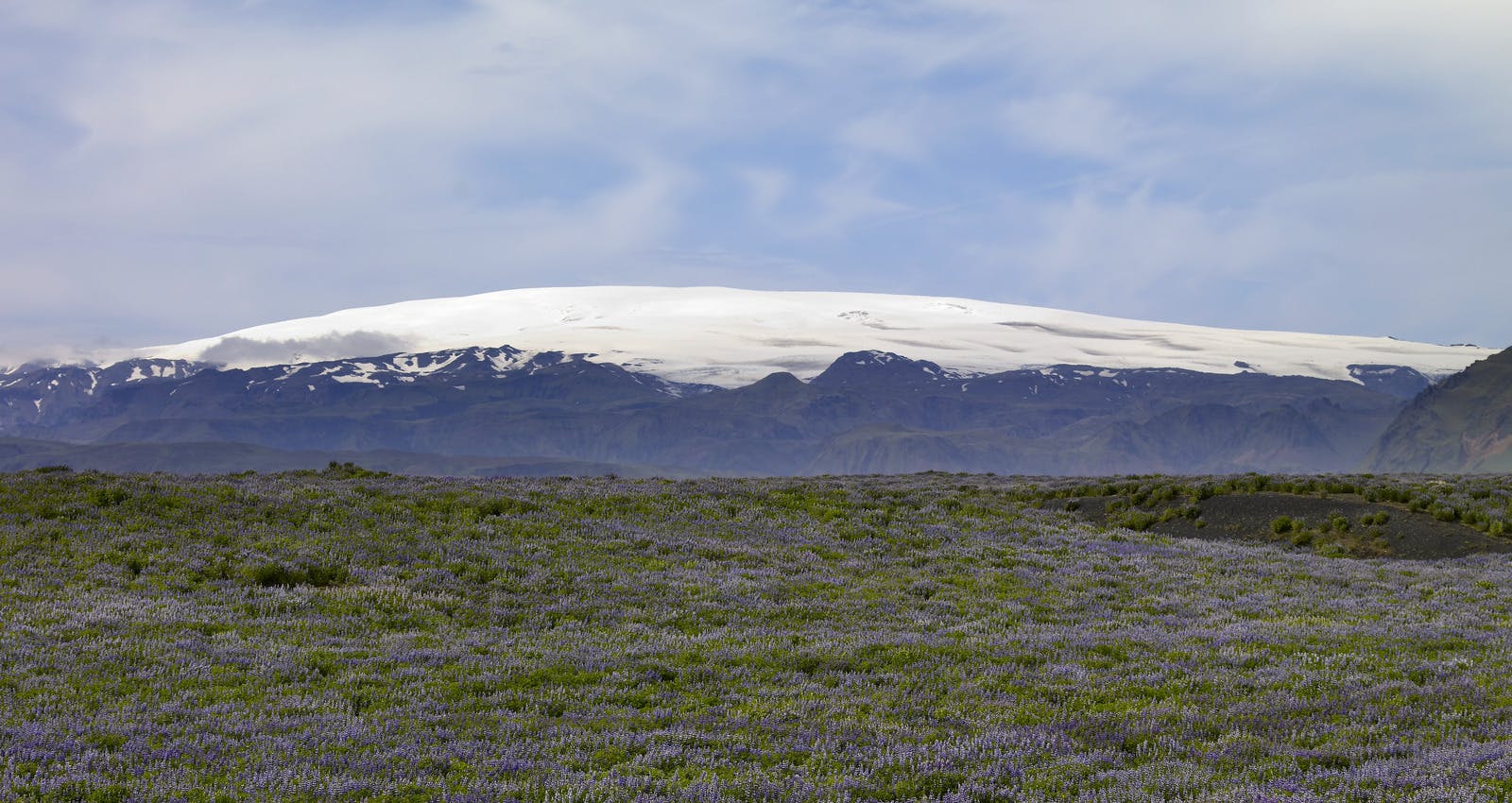
In early May 2023, the Katla caldera in Iceland experienced a notable increase in seismic activity. Over 40 earthquakes were detected within a 24-hour period, with three exceeding magnitude 4. This earthquake swarm was considered significant due to its intensity, marking the most considerable seismic activity since a similar event in 2016.
The earthquakes were primarily located in the northeastern caldera, affecting areas like the Múlakvísl River watershed. Despite the increase in seismic events, the activity eventually returned to what is considered normal for the volcano.
The Icelandic Meteorological Office, responsible for monitoring such natural events, closely tracked the developments. Initially, due to the heightened activity, the flight colour code for Katla was raised to yellow, signifying activity above normal background levels.
However, as the seismic activity decreased, the flight colour code was lowered back to green. The National Police Commissioner also declared an uncertainty phase, primarily as a precaution against potential gas pollution and hazards near the glacier.
Despite the initial concerns, the situation did not escalate to a more severe level. No signs of an impending eruption or a glacial outburst flood were detected.
When did Katla last erupt?
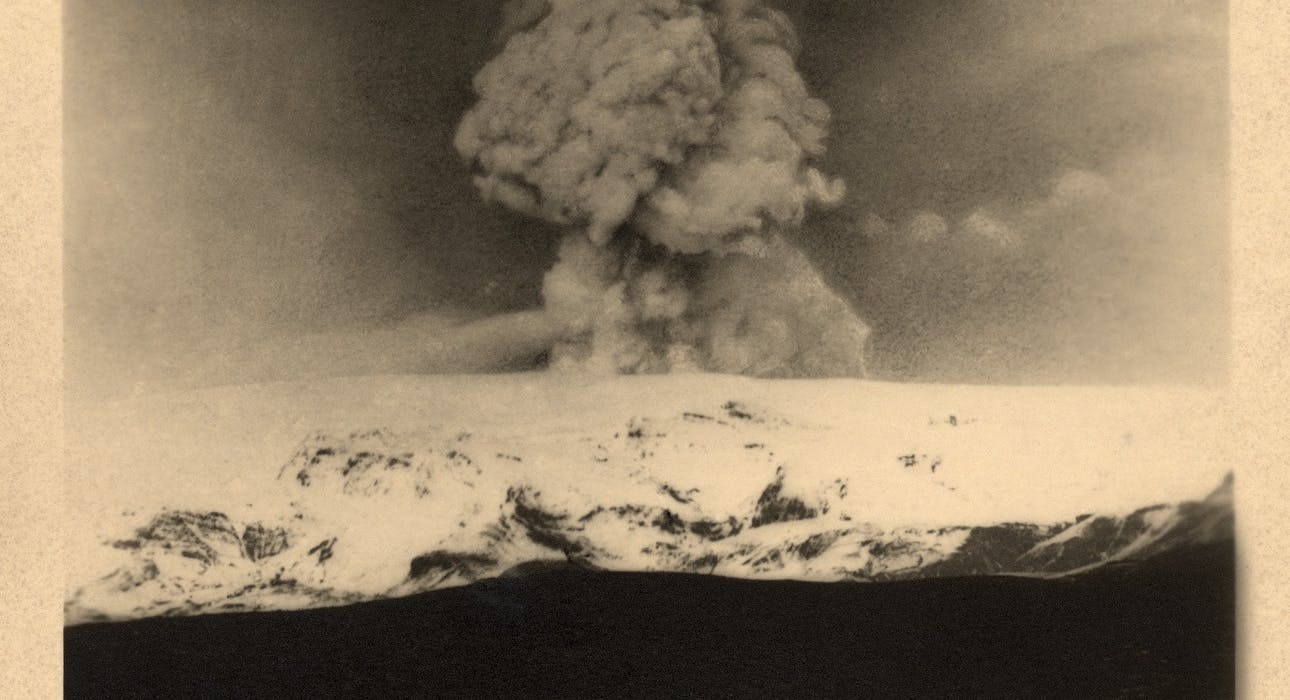
There were three minor subglacial eruptions in June 1955, July 1999, and June 2011, but the last major eruption occurred in October 1918. Lava bombs and pumice shot out meters into the air, and a 10-20 km high eruption plume formed over the volcano. It lasted for 24 days, and it was likely a mighty VEI-5-level eruption. To put it in perspective, the 1918 eruption was so powerful it resulted in extending the southern coast by about 5 kilometres due to laharic flood deposits. Katla’s present dormancy is among the longest in recorded history.
What would happen if Katla Erupted?
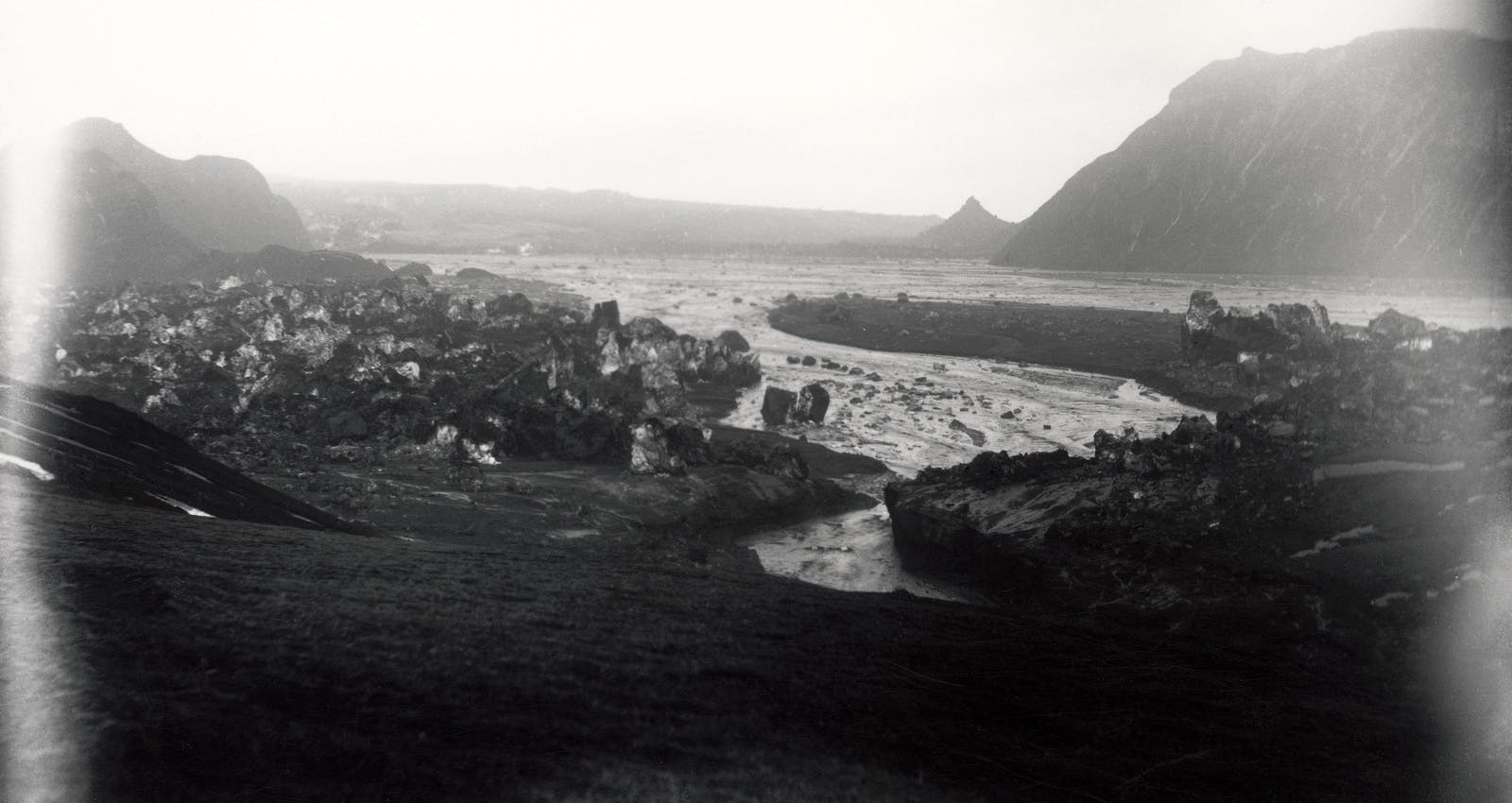
If Katla Volcano were to erupt, the impact could be extensive and multifaceted. Historically known for its explosive eruptions, Katla's activity could release large volumes of ash and volcanic gases. This ash plume could disrupt air travel extensively, similar to the 2010 Eyjafjallajökull eruption, posing risks to aircraft and affecting visibility.
The eruption might also have a notable impact on the climate due to the emission of sulfur dioxide (SO₂), which can form sulfate aerosols in the atmosphere, reflecting sunlight and potentially causing temporary global cooling. Moreover, the melting of the Mýrdalsjökull glacier, which caps the volcano, could lead to devastating glacial floods (jökulhlaups), capable of altering landscapes and destroying infrastructure.
The environmental and societal impacts of such an eruption would be significant. The spread of volcanic ash could harm agriculture, water supplies, and air quality, potentially leading to health issues, particularly respiratory problems.
The necessity for evacuations and emergency measures in nearby areas would be high due to the threat posed by glacial floods, gas emissions, and seismic activities, including earthquakes. These gas emissions, including carbon dioxide (CO₂) and sulfur dioxide (SO₂), can contribute to acid rain and deteriorate air quality.
Modern volcanic monitoring techniques would play a crucial role in predicting and managing the eruption's progression, aiding in mitigating risks and informing emergency responses. In essence, a Katla eruption would be a major geological event with far-reaching consequences for both the immediate and wider global environment.
Katla eruption history

Katla has an active history; there have been 20 documented eruptions of Katla between the years 930 and 1918, and a few might be undocumented. These eruptions have happened every 20 to 90 years, and scientists say that Katla is long overdue for an eruption. While there have been small eruptions that didn’t break the ice between 1955, 1999, and 2011, it has been more than 100 years since Katla’s last major eruption. The rule is that the longer the period lasts between eruptions, the more powerful the next one.
Katla’s previous eruptions have had a Volcanic Explosivity Index (VEI) of between 4 and 6 on a scale of 0 to 8. To compare, the 2010 eruption at Eyjafjallajökull, which shut down air traffic across Europe, had a VEI of 4. Icelanders don’t underestimate the power of Katla.
Iceland is one of the most volcanically active regions in the world — if you’re curious which ones are still rumbling, explore the active volcanoes in Iceland.
Where Can You Learn About Volcanoes in Iceland?
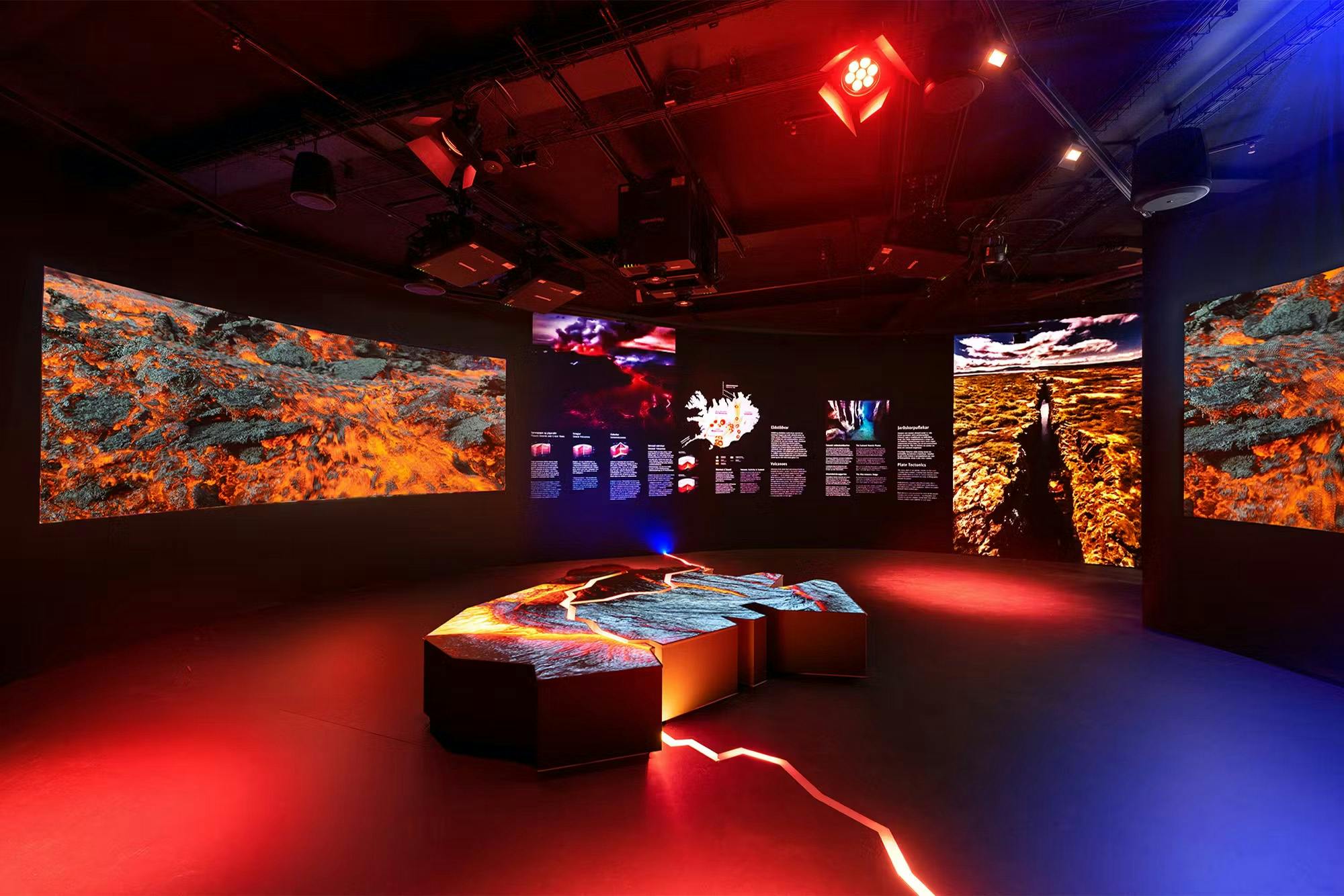
Perlan’s Forces of Nature exhibition allows guests to feel the power of volcanoes, earthquakes, and geothermal energy that powers the island. Guests will learn that volcanoes form when heat and pressure build up beneath the earth’s surface. The earth’s weak points tend to be along fault lines where tectonic plates converge or diverge, as in Iceland’s case.
Perlan’s exhibition shows that volcanic activity in Iceland is so diverse that researchers typically speak of “volcanic systems” rather than individual volcanoes. The island has 30 active volcanic systems, each with many types of volcanoes.
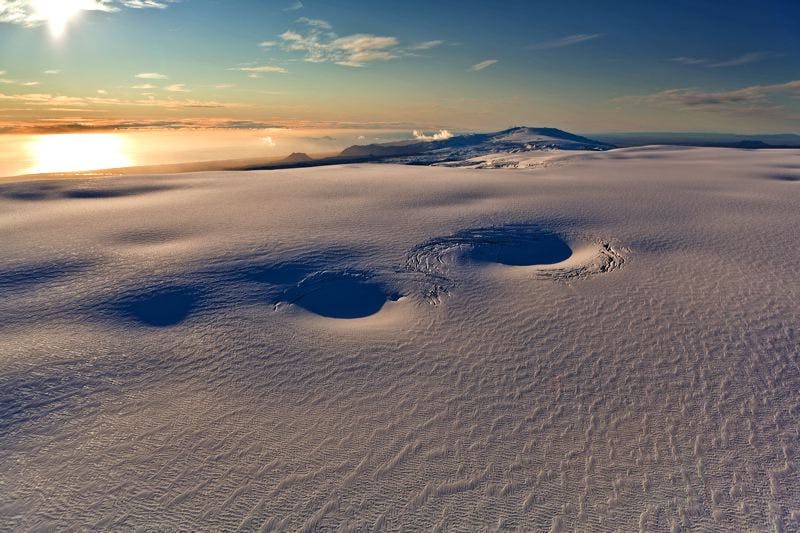
FAQ
Is it safe to visit an eruption site?
There are several factors to consider before visiting an erupting volcano. When a volcano erupts, visibility can be low, and dangerous gas levels can shift quickly and be harmful. Make sure you check safetravel.is for the latest updates on safety conditions. The authorities can always close access to the hiking trail if gas levels reach a dangerous level or if weather conditions are poor.
Other than an eruption, I would prepare yourself for the Katla Mythology.
What would happen if Katla erupted?
Iceland has robust warning systems for potential volcanic activity. In case Katla shows signs of erupting, there would be immediate evacuations, cancellation of tours, and road closures. Preceding an eruption, earthquakes are expected, but authorities are well-equipped to ensure public safety.
How often does Katla erupt?
Historically, Katla has erupted every 20 to 80 years. However, it's been over a century since its last significant eruption, leading geologists to anticipate signs of a major future eruption.
Does Katla have an Ice Cave?
Learn more about the Katla Ice Cave here.







